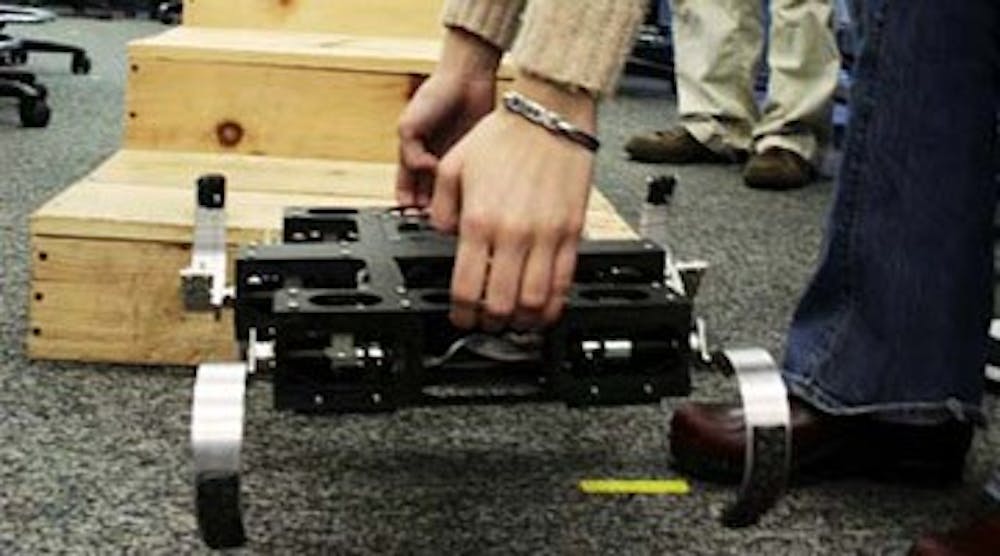
Despite weeks of research, students in one Electrical and Systems Engineering class are still pondering the best way to climb the fabled "Rocky steps" at the Philadelphia Museum of Art.
Of course, their task is more difficult than it sounds: While climbing those stairs may be an easy trek for tourists, getting a robot to make the same jaunt isn't so simple.
But that is the goal of these students, members of a new pilot bio-inspired robotics course that aims to teach engineering principles through hands-on robot-building and programming projects that attempt to imitate techniques of motion found in nature.
The course - ESE 313 - is new this spring, and just four students are enrolled this semester. Still, students and faculty have already hailed its interdisciplinary approach to engineering and its relevance to 21st-century careers.
This is not the first bio-inspired robotics course at Penn, but it is unique because it touches on several disciplines including engineering, robotics, biological principles and math, explained ESE professor Joel Weingarten, lab instructor for the class.
Although essentially a research class, the hope is that getting robots to climb steps, for example, will allow students to better understand the fields on which the class focuses.
Most notably, the class studies nature for clues to solve programming problems.
"We use biology to understand principles for locomotion," Weingarten said. "We then try to embed those principles into the robots."
For example, instead of simply adding cameras to robots to guide their movements, the students have studied cockroaches and how they move despite poor vision and limited intelligence.
Others have explored how a turtle is able to flip itself over when it lands on its back, a problem that has troubled robot designers for years.
"A lot of things can go wrong when you're building a robot," said College senior and Daily Pennsylvanian blogger Nicholas McAvoy, a physics major taking the course.
But Engineering junior Sam Russem, the teaching assistant, said many of the solutions become clear when biological principles are considered.
"Robot research has been going on for 20 or 30 years," he said. "But evolution has been happening for millions of years."
However, Weingarten argued that the real benefit of the class may not be the ability to build effective robots.
"Really, our goal is not only to teach bio-inspired robotics," he said. "We really want to teach innovation and creativity," which have been instrumental in many engineering-related start up ventures, such as Google, he added.
"It's a different approach to how we should be learning," Russem said. "In the future you'll have to figure out how to figure stuff out," he said.
Still, Weingarten pointed out that robotics has a great deal of practical potential in modern engineering. He noted the increasing use of robots for search and rescue applications and in providing companionship for the elderly.
"We hope we're changing the paradigm of engineering education," he said.
So far, Russem said, "the students are very into it."
The Daily Pennsylvanian is an independent, student-run newspaper. Please consider making a donation to support the coverage that shapes the University. Your generosity ensures a future of strong journalism at Penn.
DonatePlease note All comments are eligible for publication in The Daily Pennsylvanian.








